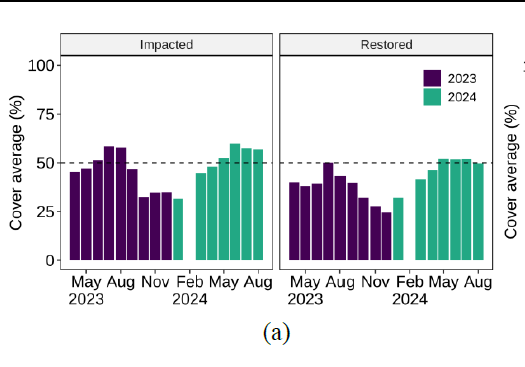Exploring the Impact of Marine Debris on Zostera marina Ecosystem Productivity
Keywords:
Dissolved oxygen, Marine debris, Net ecosystem productivity, Seagrass, Zostera marinaAbstract
Seagrass meadows (i.e., Zostera marina), a vital component of coastal ecosystems, are facing degradation due to anthropogenic impacts such as marine debris and climate change. The relationship between marine debris and seagrass ecosystems is a subject of ongoing research, with the long-term effects of marine debris on seagrass productivity yet to be fully understood. This study aims to fill this gap by investigating the impact of marine debris removal on seagrass ecosystems, a crucial step in understanding and mitigating the effects of human activities on seagrass ecosystems. Two experiments were conducted in a seagrass ecosystem in Arikawa Bay, Nagasaki Prefecture, Japan, from April 2023 - July 2024. The first experiment evaluated the effect of removing marine debris (restored site) and allowing marine debris to persist (impacted site) on the coverage of seagrasses. The seagrass coverage was evaluated by assessing a total of 340 observation quadrats. Marine debris was collected and classified based on its material (plastic, metal, net/rope, glass/ceramic, cloth and rubber); total mass was recorded. The second experiment assessed the difference between the Net Ecosystem Productivity (NEP) of the impacted and restored seagrass beds using dissolved oxygen loggers. The first experiment revealed an increase in seagrass coverage of the restored area. The second experiment showed higher NEP (g C m-2 month-1) in the restored site (mean±SD: 7.44±11.7) compared to the impacted site (mean±SD: 5.05±12). Our findings suggest that marine debris removal may positively contribute to seagrass ecosystem productivity. However, we are continuing to collect data to confirm these results.

